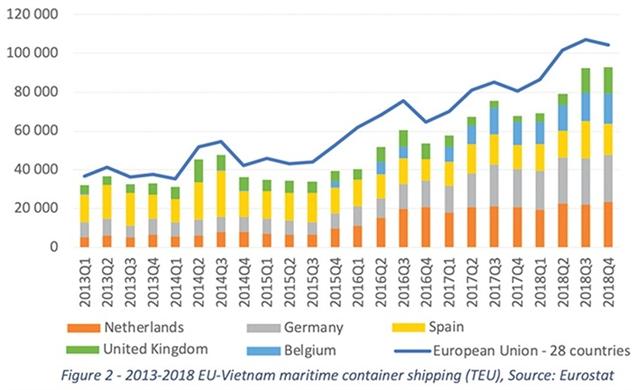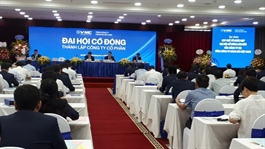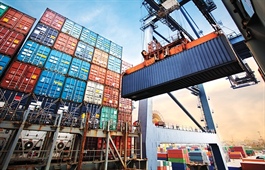Maritime sector reaps EVFTA advantages
Maritime sector reaps EVFTA advantages
The EU-Vietnam Free Trade Agreement, which took effect this month, will open up the country’s maritime industry. Nguyen Thi Thuong, vice director of Shipping and Maritime Services at the Vietnam Maritime Administration, writes about important future changes and the solutions required to increase competitiveness.
|
The EU-Vietnam Free Trade Agreement (EVFTA) will remove non-tariff barriers, thus liberalising the maritime transport market. Moreover, in government procurement, EU firms are now able to take part in tenders for public infrastructure projects in Vietnam, including those in the maritime sector.
In regard to Vietnam’s maritime transport services commitments in the EVFTA, transportation services for empty containers and feeders will open to EU businesses in Quy Nhon and Cai Mep-Thi Vai ports.
Moreover, passenger and cargo transportation services, except for inland transport, are committed at a higher level than those in the World Trade Organization (WTO) commitments and those in the Comprehensive and Progressive Agreement for Trans-Pacific Partnership. In ship maintenance and repair services, Vietnam’s commitment is similar to that in the seventh ASEAN Framework Agreement on Services (AFAS). At the front of auxiliary services for maritime transport, the market access in container handling services is as high as the country’s commitment in the ninth AFAS, and in the WTO. Meanwhile, in customs clearance services, the open market is the same as the WTO. Regarding maritime agency services, the commitment is as high as that in the ninth AFAS. Remarkably, in the WTO, Vietnam makes no commitment in market access for this kind of service.
In container station and depot services, the country’s commitments are not higher than in the WTO, meaning that EU firms can establish a joint venture with Vietnamese partners with a foreign ownership limit of maximum 50 per cent.
The landmark agreement will impact maritime transport services and seaports; strengthen imports and exports between Vietnam and the EU, thus increasing demands for maritime transport services and logistics; and create new opportunities for investment attraction.
The landmark deal is expected to raise Vietnam’s exports to the EU by an extra 20 per cent in 2020, 42.7 per cent by 2025, and 44.37 per cent by 2030. In the meantime, the country’s imports from the EU will also rise by an extra 15.28 per cent in 2020, 33.06 per cent by 2025, and 36.7 per cent by 2030. This strong growth in bilateral trade will lead to an increase in the volume of goods and commodities via Vietnamese ports. In addition, Vietnam’s commitments in tariff cuts for means of transport, machines, and technology equipment serving logistics activities from the EU will enable domestic logistics firms to buy affordable products, save costs, improve technology expertise, and reduce outsourcing services.
The EVFTA will also bring about fresh opportunities to attract investment from the EU and Vietnamese logistics service providers can more widely approach the logistics markets of EU member countries. Besides these advantages, there are some issues facing the industry. Some seaports have dredging problems, and growing pressures from road transport. While connectivity between seaports, roads, and inland waterways has been improved, links to other means of transport remain weak.
To make the maritime industry more competitive, Vietnam has formulated several strategies and solutions. Specifically, under the seaport development strategy by 2030, the focus will be on upgrading and increasing the capacity and efficiency of existing seaports while developing international transshipment seaports and international gateway seaports in economic hubs, as well as a number of large-scale container deep seaports to serve big vessels worldwide.
The industry is also studying to develop on a trial basis a port management information system at some seaports such as Cat Lat, Danang, and others. At the same time, it applies IT in seaport management, encourages domestic and foreign investment in seaport development, and develops logistics centres at seaports.
Administrative reform is also an important concentration to further facilitate maritime activities. As planned, the industry aims to apply e-payment and e-invoices for fees and charges at all seaport authorities in the coming time.
























